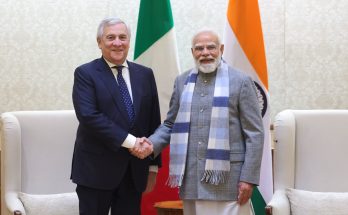Against the backdrop of the China-Pakistan nexus and threat perception from an assertive Beijing, the Indian Air Force says it’s ready for a two-front war (the brass prefers to call it contingency). Fresh from three weeks of gruelling drills that involved all operational commands, the IAF commanders say they moved aircraft across commands, simulated every war time scenario and accounted for aircraft and pilots lost in enemy action.
Air Marshal A.K. Singh, former chief of Western Air Command, says the military always plans for a two-front war. It was factored into war planning even before 2009 when the government woke up to the possibility of having to fight on two fronts simultaneously.
While the exercise appears to have gone on off well, A.K Singh is less optimistic. He says fighting on two fronts will be a tough call. “If you talk of China going along with Pakistan, then we will certainly be hard pushed to contain on both fronts and I envisage with the current strength of the air force, it will be well nigh impossible to take on both fronts at the same time,” he said.
The facts on the ground bear out his reservations. In nine years, the IAF will be retiring no less than 11 squadrons, most of them of the MiG variety. Considering that the air force has 34 squadrons now, it means in nine years the strength will be down to 23, about the same as Pakistan’s!
Consider also that the Chinese air force is continuing to expand and modernize. Presently, it’s about eight times larger than the IAF, that figure could hit the ten figure mark in nine years. China has been ramping up military infrastructure along the unresolved 4,056-km Line of Actual Control (LAC), with five airbases, a massive road and rail network in the Tibet Autonomous Region (TAR). It’s a nightmare scenario for the air force.
So apart from building up the Sukhoi, Mirage and Jaguar squadrons, the air force commanders wants to expedite two projects, the MMRCA Rafale and the LCA Tejas. Senior officers were hopeful of concluding contract negotiations on the Rafale by September. That could pave the way for the gradual induction of the Rafale in about four years, thereby partly making up the fighter jet deficit.
The brass is also hoping Initial Operational Clearance-2 will be achieved for the Light Combat Aircraft (LCA) by the year end. But IOC-1 or 2 doesn’t actually exist in aviation parlance. It was an Indian “innovation”, designed to boost the morale of the scientists and engineers working on a project now 20 years old.
The fact is the LCA is deficient on more than 100 technical parameters. It includes the GE-F404 engine which is underpowered (this will be corrected in the LCA Mark-2 when the more powerful GE-F414 engine powers up). After every sortie it requires three days for maintenance (other aircraft require 30 minutes), the landing gear overheats requiring a team on hand to apply liquid nitrogen to cool it down. The radar has not been integrated as yet and earlier there were problems with the ejection seat (which grounded the aircraft for three months).
Some believe the aircraft will never fly operationally with the air force. Given that two squadrons of LCA-I and four of LCA-2 were planned, how the deficit in fighter strength will be made up is not clear. Others, however, say that it’s not a question of if but when the LCA will fly in IAF colours. “The problems have been identified, they can be resolved, these are not insurmountable,” said a well-placed source.
The IAF brass is keeping its fingers crossed, both for the Rafale and the LCA. As for the two-front war, nobody believes it’s going to happen tomorrow or in the near future. But it’s always good to know your strengths and weaknesses in the event the balloon goes up.






